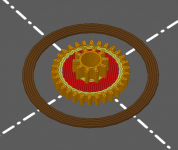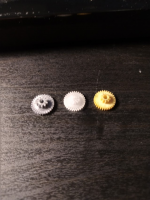erichelgeson
Well-known member
I recently ordered some replacement gears from here:
https://www.shapeways.com/product/27DNUVPJA/replacement-floppy-drive-gear-for-macintosh-comput
$8 for 12 parts + shipping
The design is opensource, you can find the 3d files here: https://www.thingiverse.com/thing:4167139
I have quite a few drives I'm replacing the gears in so I'll post my experiences here.
Replaced my first drive a 800k External Floppy P/N 825-1174A that was not ejecting. You can see the in the first picture the state of the old gear, it denigrates to the touch. The eject drive was a OMRON R2DG-31 - slightly different then other ones I've seen, but the internal gears are the same.
The fit is good, you can see the teeth line up well.
The video shows the first few ejects. Note the springs for the top were not attached when I took the video. Also the drive has some noise when spinning, unrelated to ejecting.
So far they seems to work just fine, I've done about 20 ejects and all feel the same. We'll see how it holds up and I'll post here with any updates.
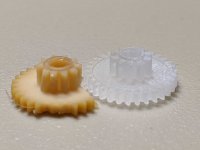
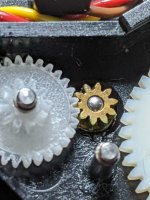
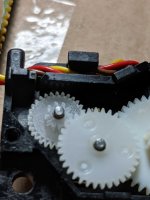

View attachment VID_134060609_155824_339.mp4
https://www.shapeways.com/product/27DNUVPJA/replacement-floppy-drive-gear-for-macintosh-comput
$8 for 12 parts + shipping
The design is opensource, you can find the 3d files here: https://www.thingiverse.com/thing:4167139
I have quite a few drives I'm replacing the gears in so I'll post my experiences here.
Replaced my first drive a 800k External Floppy P/N 825-1174A that was not ejecting. You can see the in the first picture the state of the old gear, it denigrates to the touch. The eject drive was a OMRON R2DG-31 - slightly different then other ones I've seen, but the internal gears are the same.
The fit is good, you can see the teeth line up well.
The video shows the first few ejects. Note the springs for the top were not attached when I took the video. Also the drive has some noise when spinning, unrelated to ejecting.
So far they seems to work just fine, I've done about 20 ejects and all feel the same. We'll see how it holds up and I'll post here with any updates.




View attachment VID_134060609_155824_339.mp4
Last edited by a moderator:


